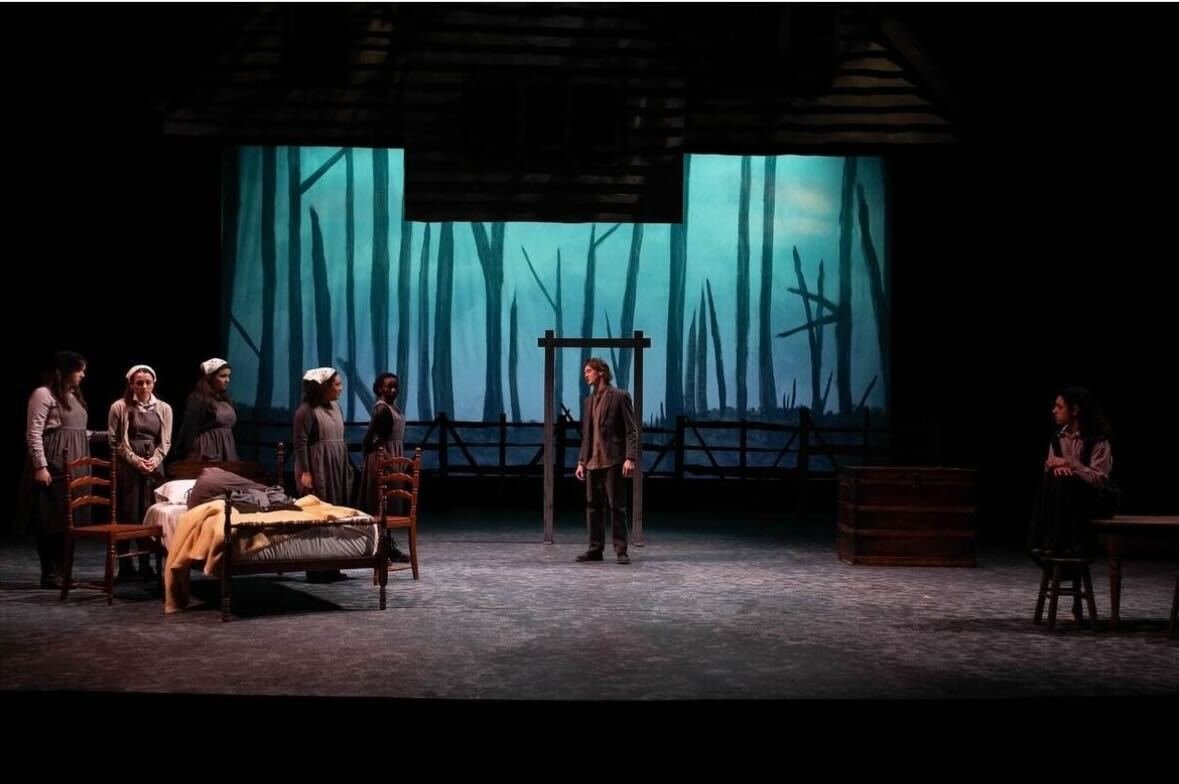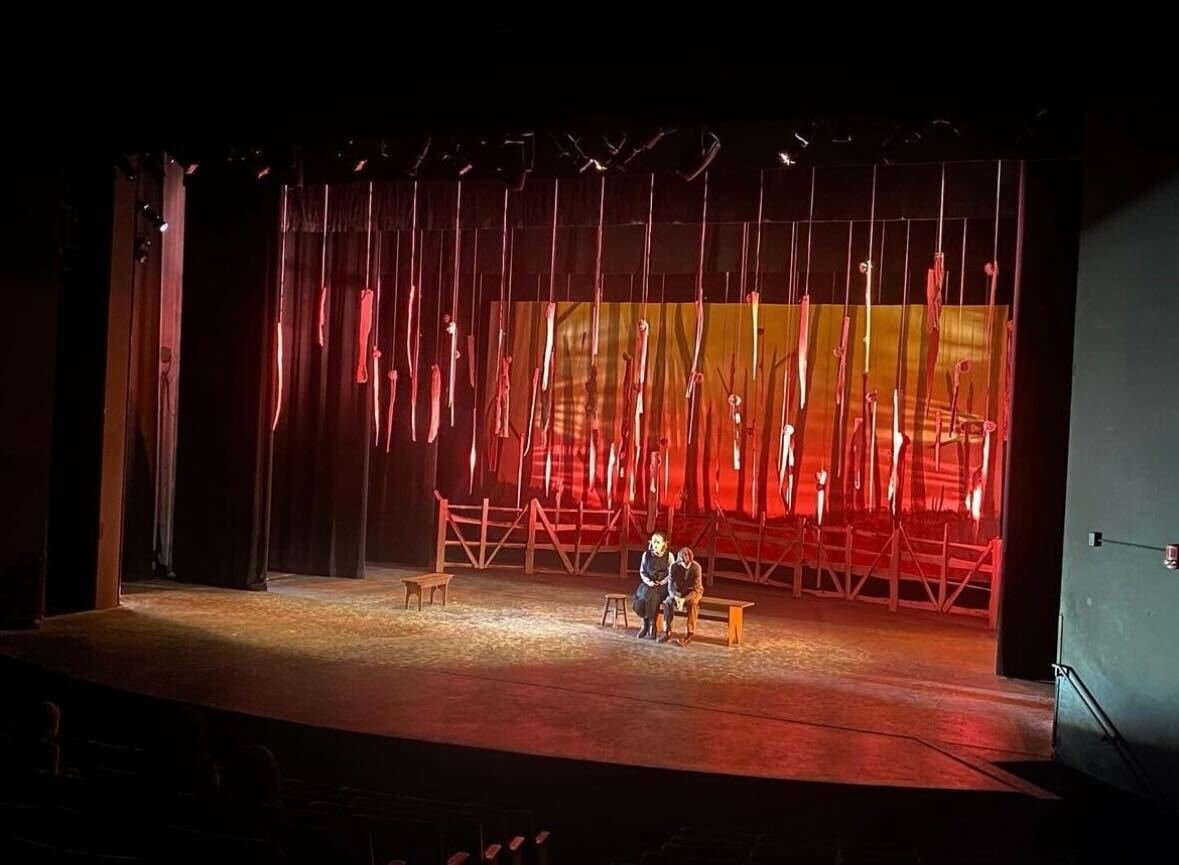
2024
The Crucible by Arthur Miller /
Abigail 1702 by Roberto Aguirre-Sacasa
ABOUT THE SHOWS
Written by Pulitzer Prize winner Arthur Miller, “The Crucible” is a drama that tells the story of a young farmer, his wife, and a young servant-girl who maliciously causes the wife's arrest for witchcraft. The farmer brings the girl to court to admit the lie — and it is there that the monstrous course of bigotry and deceit is terrifyingly depicted.
“Abigail/1702” was written by Roberto Aguirre-Sacasa, picking up where Miller’s tale left off. Set 10 years after witch trials in “The Crucible,” main character Abigail Williams, the accuser in the who sent 20 people to their doom, lives under an assumed name striving to atone for her sins. When a handsome stranger arrives claiming to be a sailor in need, Abigail takes him in, and long-dormant passions awaken within her. However, the Devil also comes looking for Abigail — demanding her soul.
SUNY Fredonia | Fredonia, NY
















Director’s Note:
Arthur Miller's play, The Crucible, a staple of High School English classes, is one of America’s best-known works of theatrical literature. Miller wrote The Crucible as a response to the McCarthy Hearings, and his testimony in front of the House of Unamerican Activities Committee.
The plot unfolds against the backdrop of the Salem witch trials, but its underlying commentary mirrors societal issues present in the McCarthy Era and beyond. Miller, in his own words, describes the result of the trials thus,
“Gradually, all the old political and moral reality had melted like a Dali watch. Nobody but a fanatic, it seemed, could really say all that he believed.” Adding “The Crucible was an act of desperation” in a piece he penned for The New Yorker in 1996.
In this rendition of The Crucible, the focus lies on the enduring relevance of its themes. Despite its 1692 setting, the play's exploration of mass hysteria, false allegations, pain, and authoritarianism resonates profoundly in contemporary society. There are no heroes in this play, but rather, all of the characters exist in a morally gray world, of fear, suspicion, pain, and danger that hangs ever present above them.
Interestingly, The Crucible was not an immediate success when it opened in 1953 on Broadway. Miller credits a production about a year later, “one with young, less accomplished actors, working in the Martinique Hotel ballroom, played with the fervor that the script and the times required” as being the reason The Crucible is one of the most performed plays all over the world and one of the most performed plays in history. To paraphrase Margaret Mead, never doubt that a small group of thoughtful, committed people can change the world. Indeed, it is the only thing that ever has.
In Roberto Aguirre-Sacasa’s Abigail/1702: A Twice Told Tale asks the question: What can we forgive in the aftermath of an atrocity, and is atonement possible? The spectre of The Crucible looms in the atmosphere of the play, even though the characters have worked diligently to move on and forget their pasts. Something that we often say in the rehearsal room is “empathy is not endorsement,” and this phrase has guided many of the conversations and explorations in this process.
Aguirre-Sacasa, the son of a prominent Nicaraguan diplomat, is a producer and writer, known for Pretty Little Liars: Original Sin (2022), The Chilling Adventures of Sabrina (2018), Riverdale (2017) and Carrie (2013). He is an acclaimed comic book writer, and has revisited the themes of Abigail/1702 in many of his works.
To our knowledge, this is the first time The Crucible and Abigail/1702, have been paired together in rep. Each alone and as a whole, ask essential questions about morality; the dangers of ‘witch hunts’; the cycle of vengeance; and the reconciliation of faith, reason, change, forgiveness and agency.
The inquiries we explore transcend time, and we urge our watching audience to reflect on their relevance amidst contemporary societal challenges, and may be to consider our own mistakes and ability or willingness to forgive others and ourselves.